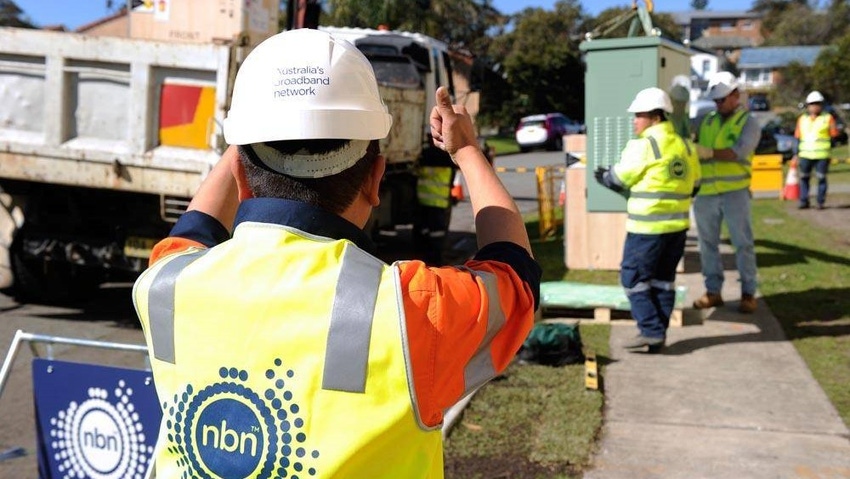Australia's NBN trials multiple PON technologies over a live fiber network
The latest NBN trial shows how operators can easily enhance 10G PON to symmetrical 25G PON and eventually evolve to 50G PON or 100G using the same passive and active fiber components.

NBN, Australia's government-owned wholesale broadband provider, has successfully trialed multiple next-generation PON (passive optical network) technologies at its FTTP exchange station in Sydney – delivering 10G, 25G, 50G and 100G broadband speeds over its existing fiber network.
According to NBN, this is the first time the prototype technology has been employed in the ''real world" outside of a lab setting.
Using Nokia's Lightspan MF fiber access platform, the company claimed to be the first in the world to achieve a maximum wholesale download speed of 83 Gbits/s on a live fiber access network.
“This is an incredible result and demonstrates the fiber we continue to upgrade the network with today is only limited by the capabilities of the equipment that will connect to it in the future," Dion Ljubanovic, chief network officer at NBN, said in a news release.
He pointed out that the trial is an important part of NBN's long-term network roadmap.
"This is a key driver that propels us to continue to replace copper with fiber across the country and also work closely with Australia's property development industry to support the creation of vibrant new communities equipped with fiber connectivity," Ljubanovic added.
The NBN fiber network currently spans 300,000 kilometers of optic cables. The wholesale broadband provider is rolling out around 500km of optical fiber per week, replacing copper-based services across Australia with full fiber connections. NBN aims to increase the availability of close to 1 Gbits/s services for 90% of its fixed-line network by the end of 2025.
Future proofing existing fiber network
The trial showed that NBN's FTTP network can support multiple PON technologies without any need to change optic cables that have already been laid.
According to NBN, this offers a potential future where newer technologies can work simultaneously with current-day FTTP technologies and services.
Besides increasing broadband speeds and capacity across the company's existing cable network, the new PON technologies can deliver benefits including smoother video calls, a better streaming experience, faster response times for gaming, faster data downloads and back-ups, and the ability to support more devices at the same time.
The trial comes as NBN is progressively deploying Nokia's MF-14 optical line terminal (OLT) onto the FTTP network, which supports higher capacity fiber-optic broadband technologies.
NBN said two demonstrations were run on the single fiber. First, XGSPON, 25GS PON and 50G PON signals combined to achieve an aggregate Layer 1 PON speed of 85Gbits/s (downstream), or Layer 2 download speeds of 71Gbits/s (8Gbits/s, 21Gbits/s and 42Gbits/s, respectively) after accounting for protocol overheads.
Second, XGSPON, 25GS PON and 100 gigabit signals combined to achieve an aggregate Layer 1 PON speed of 135Gbits/s (downstream), or Layer 2 download speeds of 112Gbits/s (8Gbits/s, 21Gbits/s and 83Gbits/s, respectively) after accounting for protocol overheads.
The trial involved researchers from Nokia's Bell Labs, while representatives from the University of Technology Sydney and the Technology Council of Australia were present to observe the demonstrations.
"There is a huge opportunity for operators to leverage their existing fiber broadband networks to efficiently add advanced services which goes way beyond consumer services. Think enterprise, mobile backhaul, smart City, industry 4.0," Geert Heyninck, vice president of broadband networks at Nokia, said in the news release. "It’s important for service providers to have choices to match the right speed and cost points to meet the different use cases and market requirements they may have."
Empowering telco operators
Nokia said the latest NBN trial shows how operators can easily enhance 10G PON to symmetrical 25G PON and eventually evolve to 50G PON or 100G using the same passive and active fiber components.
In October, NBN and Nokia set a new Australian record for a passive optical network by achieving symmetrical speeds of 21 Gbits/s in live field demonstrations.
Jaimie Lenderman, principal analyst and research manager at Omdia, noted that Nokia's demonstration shows the strength of the PON technology and the multiple pathways available to support future applications. Omdia is a sister company to Light Reading.
"The flexibility to choose between 10G, 25G, 50G, and eventually 100G and beyond empowers operators to customize their networks based upon customer requirements and future service plans for residential, enterprise, and beyond," Lenderman said in the news release.
Meanwhile, NBN's Ljubanov said the company is always looking for ways to push the capabilities – in both speed and reliability – of the entire NBN network, as the operator arms itself to meet future demand.
"The average Aussie home is forecast to download around one terabyte per month within the next decade and technologies, like augmented reality and generative artificial intelligence, will place even greater demand on the network," said Ljubanov.
"This successful demonstration shows we have the potential to deliver a step change in next-generation speeds over our network in the long term," he added.
Read more about:
AsiaAbout the Author(s)
You May Also Like












